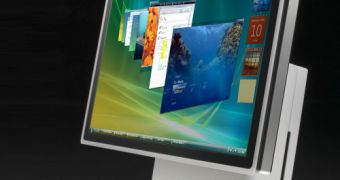Microsoft is currently in the final stages of cooking both Windows Vista Service Pack 1 and Windows XP Service Pack 3. In December 2007, the first public builds of Vista SP1 and XP SP3, namely the Release Candidates became available for download.
In the second week in January, the Redmond company dropped a refresh for Vista SP1 RC1, namely Build 17128. As of now, there is no word yet if Microsoft plans to issue a Refresh for XP SP3. Either way, having reached the Release Candidate stage, the two service packs are in near final form, and the inherent issues that the upcoming deployment scenario catalyzes is whether Vista SP1 and XP SP3 will require new hardware.
Well, Windows XP SP3 brings almost nothing new to the table. The service pack does not even contain Internet Explorer 7, and Vista's DirectX 10 is completely out of the question. XP SP3 will run fine on top of the same hardware configurations as XP SP2, and users needn't concern themselves with upgrades for the implementation of the service pack. XP does contain some Vista features including "Black Hole" Router Detection, Network Access Protection (NAP), enhanced security for Administrator and Service policy entries, Microsoft Kernel Mode Cryptographic Module and an overhauled Windows Product Activation, but none of them will impact hardware requirements in the least.
With Windows Vista the issue is not so simple. Theoretically, SP1 is nothing more than a standard service pack that will only superficially impact the architecture of Vista RTM. As such, SP1 will integrate seamlessly with the hardware infrastructure used to run the original Vista bits. An upgrade is by no means required. But at the same time, in order to enjoy the added features of Vista SP1, some users will have to buy new video cards. This is because Vista SP1 brings to the table a superset of DirectX 10.
In mid August 2007, Sam Glassenberg, Lead Program Manager on the Microsoft DirectX Team, revealed that DirectX 10.1 fully supports DirectX 10 hardware. Version 10.1 will simply extend the hardware functionality and the existing capabilities, Glassenberg explained. DirectX 10.1 adds to the DirectX 10 feature set, extends the lifetime of the application programming interface, and increasing the management level of GPU's shading and filtering, boosting antialiasing, comes with an evolved shader model, and improvements in terms of the High Dynamic Range.
So what will happen when users will deploy Vista SP1 on top of Vista and go from DirectX 10 to DirectX 10.1? Well, absolutely nothing. All the features will still be there, all the games will still play, and the video card will continue to be supported. At the same time, hardcore gamers that just last year upgraded to a DirectX 10 ready video card will have to make the jump again to hardware tailored to version 10.1, as older video cards will not support the new graphics features of DirectX 10.1 in Vista SP1.

 14 DAY TRIAL //
14 DAY TRIAL //